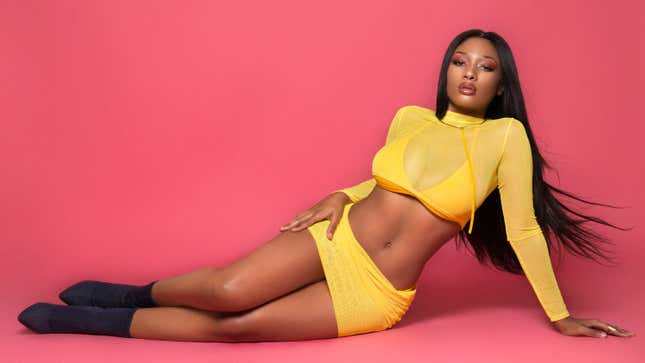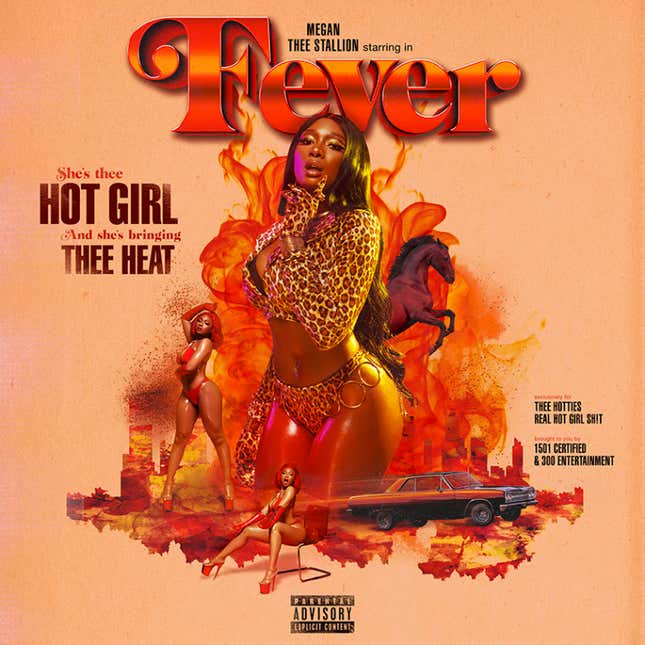
Photo: 300 Entertainment
Megan Thee Stallion chose to use three images of herself for the cover of her debut album, Fever, released on Friday. This should tell you how much she values Number One. There she is in a cheetah-print two-piece, and in a candy-apple-red bikini, and seated in a chair with her mouth agape. There’s a horse and flames in the background, of course. Besides being a monument to self (not unlike the eyegasmic images of her on a bike looking preternaturally oiled for Rolling Stone), the cover design reminds me of the stylized, outrageous (and mostly excellent) Pen and Pixel album artwork that dominated the Cash Money and No Limit era. (These were the opposite of Tyra Banks’s advice to remove one accessory or item of clothing before leaving the house; the idea was to add and never stop adding.) The Fever cover art isn’t that drastic (there’s much more negative space), but it is dramatic. It gets a point across that Megan is the center of her universe.
-

-

-

-

-

-

-

-

-

-

-

-

-

-

-

-

-

-

-

-

-

-

-

-

-

-

-

-

-

-

-

-

-

-

-

-

-

-

-

-









































